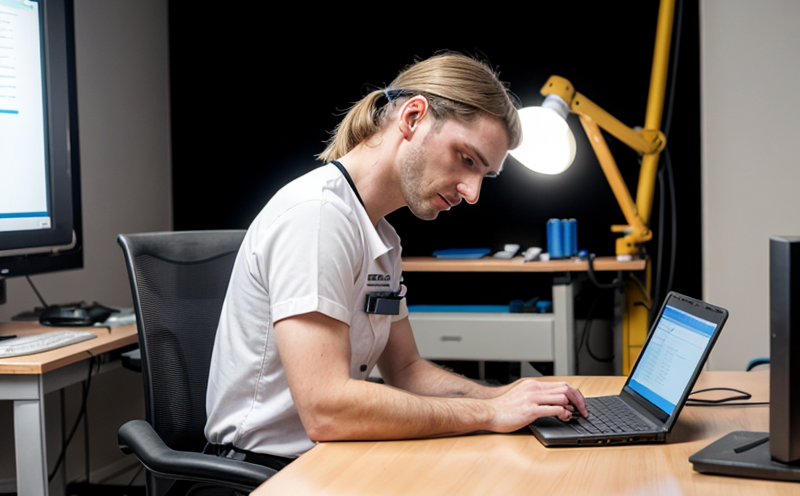FAA AC 25.1322 Flight Crew Alerting Ergonomics Testing
The Federal Aviation Administration’s Advisory Circular (AC) 25.1322 focuses on the critical aspect of human factors and ergonomics within aviation, specifically addressing flight crew alerting systems. This standard is pivotal in ensuring that cockpit alerts are designed to minimize pilot workload, enhance situational awareness, and reduce the risk of human error. Compliance with FAA AC 25.1322 is mandatory for all aircraft manufacturers seeking certification under FAR Part 25.
The standard mandates rigorous testing to evaluate the effectiveness of flight crew alerting systems in various scenarios. This includes assessing the system’s ability to:
- Ensure that alerts are clear, unambiguous, and immediately noticeable,
- Minimize false alarms while ensuring no critical alerts are missed,
- Support pilots in maintaining situational awareness during critical phases of flight,
- Conform with ergonomic principles to reduce pilot fatigue and stress.
The testing process involves a series of real-world simulations designed to replicate the dynamic and challenging conditions encountered by pilots. These tests are conducted under controlled laboratory environments, but they also incorporate field trials to ensure that the alerting system performs consistently across diverse operational scenarios.
At our facility, we employ advanced instrumentation and software tools to simulate cockpit environments with high fidelity. This allows us to accurately assess how flight crew members interact with alerts in various conditions. Our team of experts uses this data to refine and optimize alert systems, ensuring they meet the stringent requirements outlined in FAA AC 25.1322.
One of the key challenges in testing these systems is achieving a balance between alerting pilots effectively and avoiding overloading them with information. Our approach involves a multi-faceted methodology that includes:
- Conducting comprehensive human factors analyses,
- Implementing advanced signal processing techniques to analyze pilot response times,
- Utilizing eye-tracking technology to understand visual focus and alert recognition,
- Evaluating the impact of alerts on pilots' cognitive load using validated metrics.
The results of these tests are meticulously documented and reported, providing manufacturers with actionable insights to improve their alerting systems. Our reports cover all aspects of the testing process, including:
- Detailed descriptions of test procedures,
- Analysis of pilot performance data,
- Evaluation of system effectiveness under various conditions,
- Recommendations for design improvements based on findings.
Our expertise in this area ensures that we can provide comprehensive testing solutions tailored to the specific needs of each manufacturer. By adhering strictly to FAA standards, we help ensure the safety and reliability of flight crew alerting systems across the aviation industry.
Industry Applications
The application of FAA AC 25.1322 goes beyond just compliance; it plays a crucial role in enhancing overall aviation safety by focusing on human factors and ergonomics. Here are some key applications:
- Aircraft Design: Ensures that alerting systems are integrated into the cockpit design with ergonomic principles, minimizing pilot workload during critical phases of flight.
- Pilot Training: Provides a framework for training programs focused on recognizing and responding to alerts effectively, reducing the risk of human error.
- Aircraft Maintenance: Guides maintenance personnel in checking and calibrating alerting systems to ensure they function correctly under all operational conditions.
- Regulatory Compliance: Assists manufacturers in meeting regulatory requirements for certification, ensuring compliance with international standards like ISO 16749:2008 and IEC 61539-2:2015.
The success of FAA AC 25.1322 lies in its ability to bridge the gap between technological advancements and human interaction, making it an indispensable tool for enhancing aviation safety.
Quality and Reliability Assurance
The rigorous testing protocols required by FAA AC 25.1322 are essential components of our quality and reliability assurance processes. These tests not only ensure that alerting systems meet regulatory requirements but also enhance the overall safety and reliability of aircraft.
We employ a suite of advanced instruments and software tools to simulate real-world conditions, providing manufacturers with accurate data on system performance. Our testing process includes:
- Simulating various flight scenarios to evaluate alert effectiveness,
- Using eye-tracking technology to assess pilot response times,
- Evaluating cognitive load metrics to ensure alerts are neither too subtle nor overwhelming,
- Conducting post-test analysis to refine and optimize system performance.
The data collected during these tests is invaluable for manufacturers, as it provides detailed insights into the effectiveness of their alerting systems. This information is used to make informed decisions about design improvements, ensuring that the final product meets or exceeds regulatory standards.
Our commitment to quality and reliability extends beyond testing; we also offer ongoing support through:
- Regular audits and inspections,
- Training programs for maintenance personnel,
- Continuous monitoring of system performance in real-world conditions,
- Providing detailed reports and recommendations for improvement.
This comprehensive approach ensures that our clients receive the highest quality testing services, contributing to a safer aviation industry.
Competitive Advantage and Market Impact
The implementation of FAA AC 25.1322 not only meets regulatory requirements but also provides manufacturers with a competitive edge in the global market. By adhering to this standard, companies can:
- Earn trust from regulators and customers,
- Ensure compliance with international standards like ISO 16749:2008 and IEC 61539-2:2015,
- Demonstrate a commitment to safety and reliability,
- Gain insights into best practices for human factors and ergonomics in design.
In the highly competitive aerospace industry, compliance with FAA AC 25.1322 is seen as a key differentiator. It not only enhances product quality but also builds brand reputation. By offering comprehensive testing services that go beyond mere compliance, we help manufacturers stay ahead of the curve in terms of innovation and safety.
The impact of adhering to this standard extends far beyond individual companies; it contributes to the overall safety and reliability of the aviation industry as a whole. This, in turn, fosters greater trust among passengers and airlines, driving demand for safer aircraft designs.





